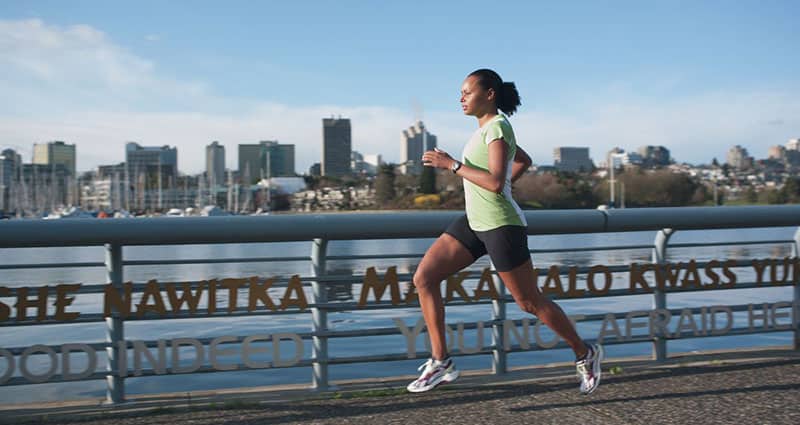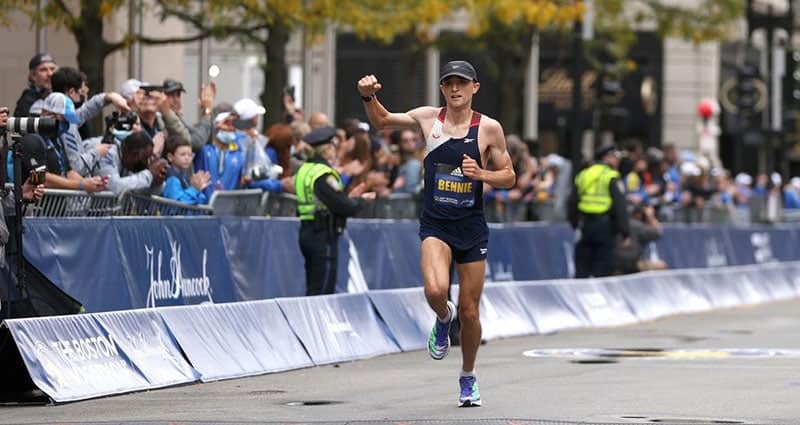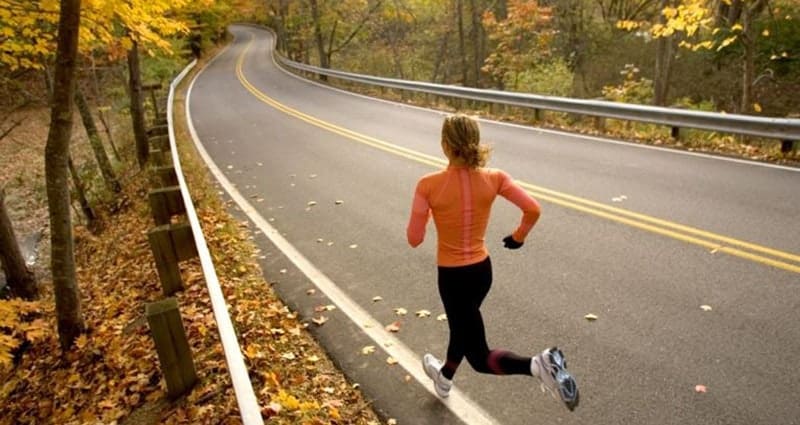Running cadence is an important performance metric for distance runners. It significantly affects running economy and injury risk.
“An optimal running cadence improves performance and reduces injury-risk.”
Are you aware of your cadence, and if so, have you optimized it? After reading this article, you will better understand your cadence.
What is Running Cadence?
Running cadence – or stride rate – is the number of steps you take per minute with both legs. If you own an advanced running watch with an inbuilt cadence-tracking feature, you may already have it on your display. But you can also easily calculate yours with a stopwatch by counting the steps you take with 1 leg for 30 seconds and then multiplying it by 4.
Cadence, measured in strides per minute (SPM), goes hand in hand with stride length as an important performance metric.
Speed = cadence (SPM) x stride length
If you compare yourself with elite runners, you will notice that their stride rate is strikingly similar to yours. What’s vastly different is their stride length. But that doesn’t mean cadence can be neglected. I argue that many amateur runners should fix their cadence first. Overstriding is endemic in our sport, and the resulting breaking forces are a major cause of injury and an inefficient running economy.
Factors Affecting Cadence
The benchmark for a good cadence is often touted as 180 steps per minute. While that’s a good number to remember, it may not be your ideal cadence. Even among elite runners, cadence varies greatly. Mo Farah, for example, is known for an exceptionally low stride rate.
The differences in cadence are genetic to some degree. Taller runners generally have longer legs and, therefore, take fewer steps at the same speed as runners of shorter stature. Our predominant muscle fiber type is also a factor. Athletes with a high percentage of fast-twitch fibers tend to thrive on higher cadence.
But the most significant difference is your running speed. Anaerobic track repetitions or VO2 max intervals have a higher cadence than long runs. The reference point for cadence, however, should be your runs at an easy pace, which makes up approximately 80 percent of your weekly mileage. If your easy pace is slower than 10 minutes per mile, then you are likely in the range 160 to 170 strides per minute (SPM). But if your easy pace is faster than 10 minutes per mile, your stride rate should be 170+.
Running Cadence and Performance
Remember when I said that stride length is more critical to performance enhancement than cadence and that overstriding is a significant blow to your running economy? I didn’t contradict myself there because a long stride and overstriding are 2 different things. Overstriding means your leg hits the ground ahead of your center of gravity. Instead, your feet should land underneath you with the forward propulsion behind your body. That’s what avoids breaking forces and enables powerful, long strides.
If you improve your running form in that way, with a snappier stride, you will enhance your running economy. In other words, you run faster at the same metabolic cost. That’s significant because running economy is one of the three performance markers (alongside VO2 max and lactate threshold).
Reduced braking forces aside, the improvements in running economy via a higher cadence will also come through a shorter ground contact time (GCT) and less vertical oscillation. Some advanced running watches measure those metrics so you can track your improvements over time.
Running Cadence and Injury Prevention
Most importantly, a higher running cadence can reduce your risk of injury. While the cause of injuries is not limited to overstriding, landing forces are significantly reduced with a higher cadence, especially at the ankles, knees, and hips. However, a low stride rate is also associated with shin splints, stress fractures, and a longer muscle recovery time, none of which aid your performance goals.
Cadence manipulation – a relatively simple intervention – helps 50 percent of runners. If you have experienced trouble crossing a certain amount of weekly mileage, you may find that a lower cadence enables you to run more. Perhaps you could add a running day or increase your overall mileage.
Technique Cues to Improve Cadence
The first step to increase cadence is to clean up your running form unless yours is flawless already. A telltale sign of overstriding is landing on your heels. Aim for a mid-foot strike by placing your feet beneath your center of gravity. That doesn’t mean decreasing your stride length, though. Forward propulsion happens behind your body instead of in front of it.
Now, I see many runners who consciously point their toes downwards before they strike the ground to avoid a heel strike. But that doesn’t address the problem of overstriding. The issue is often tight, misaligned hips, which makes it challenging to land with your feet under your body’s center of gravity and get proper leg extension. You may have to work on your range of motion with dynamic and static stretching.
Technique cues can also be helpful. Imagine you’re running barefoot on hot coal. You’d minimize the time spent on the ground by picking up your feet faster. You may also pay attention to your upper body, as your arm-swing dictates the cadence of your legs to a large degree. Push your elbows backward and let them fall in place. Practice a compact arm swing consciously until it becomes second nature.
Finally, consider a shoe with a minimal heel-to-toe drop. Standard trainers with a heel drop over 10mm are not ideal for a high cadence. But that doesn’t mean you will have to get barefoot trainers. Many maximalist shoes with solid cushioning feature a low heel drop.
Training Adjustemts to Improve Cadence
Technique corrections go hand in hand with better training, of course. A quick fix to your running form is likely insufficient for a profound change in your running cadence. The most crucial aspect of improving your stride rate is speed development. Include some strides, hill sprints, or repetitions at mile race pace or faster twice a week. This primes your neuromuscular for a shorter ground contact time.
The treadmill can be beneficial for increasing your cadence. You will notice you pick up your feet faster after a few sessions on it. I’m not saying you should permanently take your running indoors, but initially, it can be an effective tool to ingrain a faster leg turnover. Downhill running has the same effect. However, you want to be mindful of the increased landing forces here. Use that method sparingly.
Strength training, plyometrics, and running drills are also beneficial. Focus on running-specific exercises like the half back squat instead of isolated movements on machines. Include some plyometrics, which adds explosiveness to strength. The final touches are running drills. None of this has to be time-intensive or done daily. Start with lunges and a skipping rope if you are pressed for time.





